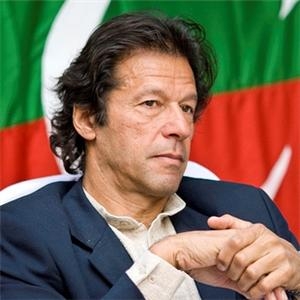They were going to anyway, President Trump’s approval or no. Birds of a feather — jihadis all
[IsraelTimes] Amid countries’ rapprochement, White House okays Sharaa government’s proposal to form unit including some 3,500 fighters from abroad — mostly Chinese UighursThe United States has given its blessing to a plan by Syria’s new leadership to incorporate thousands of foreign jihadists, former rebel US approves of Syrian plan to absorb foreign jihadists into its army, Trump envoy says fighters, into the national army, provided that it does so transparently, US President Donald Trump
...They hit him with slander, they impeached him twice. Nancy Pelosi tore up his State of the Union address on national TV. They stole an election and put his adherents in jail. They vilified him. They couldn't crucify him, so they shot him. Still, they can't keep him down...
’s envoy has said.
Three Syrian defense officials said that under the plan, some 3,500 imported muscle, mainly Uighurs from China and neighboring countries, would join a newly formed unit, the 84th Syrian army division, which would also include Syrians.
Asked by Rooters in Damascus whether Washington approved the integration of imported muscle into Syria’s new military, Thomas Barrack, the US ambassador to
...the occupiers of Greek Asia Minor...
who was named Trump’s special envoy to Syria last month, said: "I would say there is an understanding, with transparency."
He said it was better to keep the fighters, many of whom are "very loyal" to the new administration of Ahmed al-Sharaa, within a state project than to exclude them.
The fate of foreigners who joined Sharaa’s Hayat Tahrir al-Sham, formerly al-Nusra, before that it was called something else
 ...al-Qaeda's Syrian affiliate, from which sprang the Islamic State...
...al-Qaeda's Syrian affiliate, from which sprang the Islamic State...rebels during the 13-year war between rebel groups and Syria’s Iran-backed President Bashir
Pencilneckal-Assad
Trampler of Homs...
has been one of the most fraught issues hindering a rapprochement with the West since HTS, a former affiliate of al-Qaeda, toppled Assad and took power last year.
At least until early May, the United States had been demanding that the new leadership broadly exclude imported muscle from the security forces.
But Washington’s approach to Syria has changed sharply since Trump toured the Middle East last month and met with Sharaa in Riyadh, in the first such meeting between US and Syrian leaders in a quarter century. Following the meeting, Trump agreed to lift Assad-era sanctions on Syria and named Barrack, a close friend, as his special envoy.
Two sources close to the Syrian defense ministry told Rooters that Sharaa and his circle had been arguing to Western interlocutors that bringing imported muscle into the army would be less of a security risk than abandoning them, which could drive them into the orbit of al-Qaeda or Islamic State
...formerly ISIS or ISIL, depending on your preference. Before that they were al-Qaeda in Iraq, as shaped by Abu Musab Zarqawi. They're really very devout, committing every atrocity they can find in the Koran and inventing a few more. They fling
Allaharound with every other sentence, but to hear western pols talk they're not
reallyMoslems....
The US State Department and a Syrian government spokesperson did not respond to requests for comment.
The US-Syria rapprochement comes amid reports that Israeli officials have met with Syrian counterparts about the possibility of a warming of Israeli-Syrian ties, although Jerusalem has in public expressed deep suspicion of Sharaa. Trump has said he did not consult with Israel before restoring ties with Syria.
Following Assad’s ouster in December, Israel has struck the Syrian military numerous times and moved troops into the Syrian side of the two countries’ demilitarized buffer zone, citing fears it would fall into the wrong hands.
CHINESE CONCERNS
Thousands of Sunni Moslem foreigners joined Syria’s rebels early in the 13-year civil war to fight against Assad, who was himself aided by Iranian-backed Shi’ite militias, including Lebanese terror group Hezbollah.
Some fighters formed their own factions, while others joined established groups such as the Islamic State, which briefly declared a caliphate in large parts of Syria and Iraq, before being routed by an array of forces backed by both the United States and Iran.
Foreign fighters within HTS earned a reputation as loyal, disciplined and experienced bad boys, and formed the backbone of the group’s elite so-called suicide units. They fought against the Islamic State and other wings of al-Qaeda from 2016, when HTS broke away from the group founded by the late Osama bin Laden
...... who is no longer with us, and won't be again......
The Uighur fighters from China and Central Asia are members of the Turkistan Islamic Party (TIP), which Beijing considers a terrorist group. A Syrian official and a foreign diplomat said China had sought to have the group’s influence in Syria restricted.
A Chinese foreign ministry spokesperson said, "China hopes that Syria will oppose all forms of terrorism and krazed killer forces in response to the concerns of the international community."
Osman Bughra, a TIP political official, told Rooters in a written statement that the group had officially dissolved and integrated into the Syrian army.
"At present, the group operates entirely under the authority of the Ministry of Defense, adheres to national policy, and maintains no affiliations with external entities or groups," he said.
In December, the appointment of a handful of foreign jihadists who were part of HTS’s big shotship to top military posts had alarmed Western governments, raising concerns over the direction of Syria’s new Islamist leadership.
Demands to freeze the appointments and expel rank-and-file imported muscle became a key point of contention with Washington and other Western countries up until the week of Trump’s landmark meeting with Sharaa.
Sharaa has said that imported muscle and their families may be granted Syrian citizenship due to their role in fighting Assad.
Abbas Sharifa, a Damascus-based expert on jihadist groups, said the fighters being included in the army had shown loyalty to Syria’s leadership and were "ideologically filtered."
But "if you abandon them, they become prey to ISIS or other radical groups," he said.
Related:
Turkistan Islamic Party: 2024-12-31 From jihadi group to gov’t, cont’d:New regime HTS in Syria said to appoint some foreign Islamist fighters to military
Turkistan Islamic Party: 2024-12-12 Syria after the collapse. What next?
Turkistan Islamic Party: 2023-08-22 China Turns to Taliban to Control ETIM: Exclusive on Bid to Woo Guv of Afghanistan’s Badakshan
Turkistan Islamic Party: 2024-12-31 From jihadi group to gov’t, cont’d:
Turkistan Islamic Party: 2024-12-12 Syria after the collapse. What next?
Turkistan Islamic Party: 2023-08-22 China Turns to Taliban to Control ETIM: Exclusive on Bid to Woo Guv of Afghanistan’s Badakshan


 ...
... ...al-Qaeda's Syrian affiliate, from which sprang the Islamic State...
...al-Qaeda's Syrian affiliate, from which sprang the Islamic State... ...aka
...aka  [AfghanDigest] LAST 24 HOURS
[AfghanDigest] LAST 24 HOURS